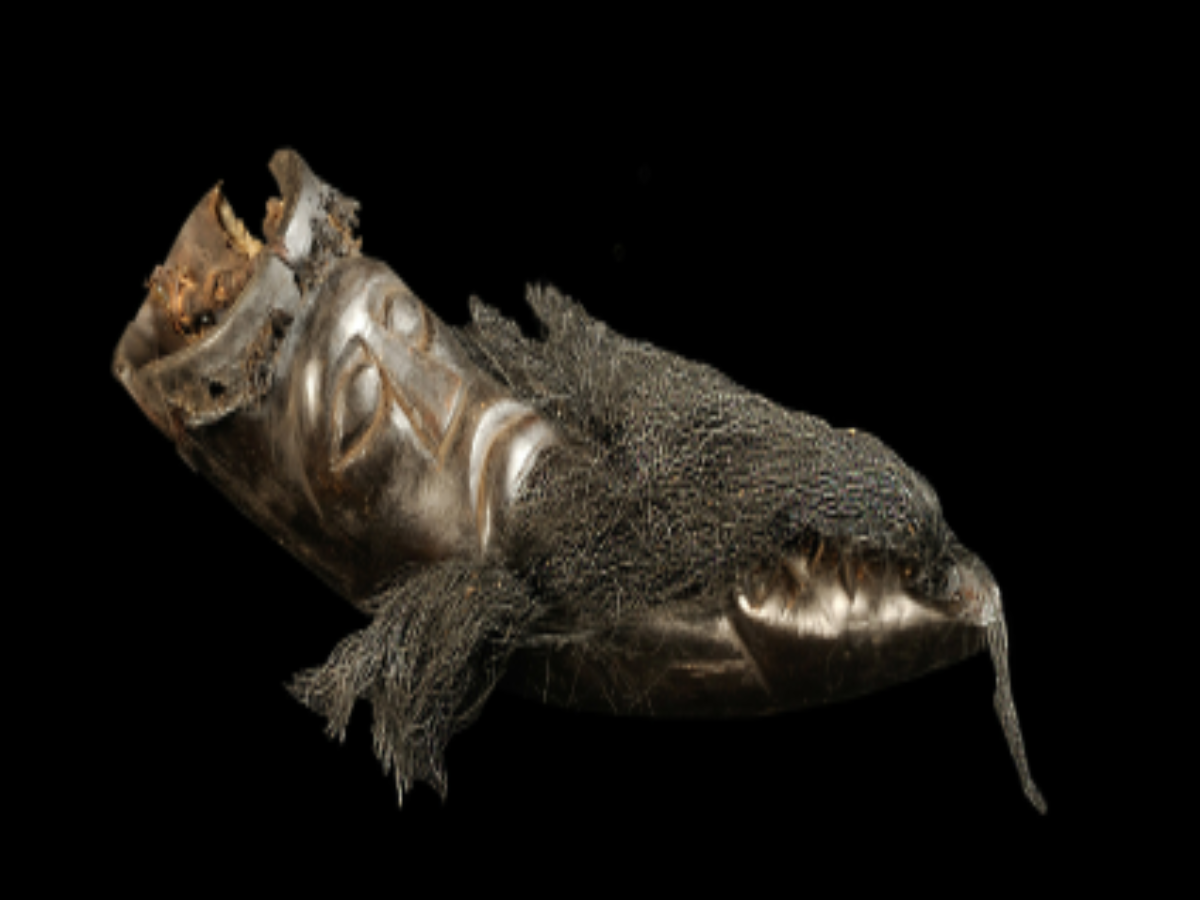State
Tribe Name
Art Type
short description
The Konyak tribe is one of the most noted warrior tribes of Nagaland. This extraordinary casket made from Mithun horn, a cultural artifact par excellence of the Konyak Naga tribe, reflects the pride of their traditions and tribals, the excellent wood, bone, and horn artisanship by the Konyaks.The casket is engraved with faces of two human figures, with intricately designed eyes, nose, and mouth-possibly representing an ancestral spirit or a revered figure. The smaller face on the casket has been etched with vertical lines across the forehead, which probably meant to show tribal tattooing or some ceremonial mark. Facial engravings feature strongly in Konyak art, symbolizing existence, protection, and memory of the ancestors.
Thumbnail

Filter Postion
Left
Filter Background
Off
Theme
Filter Header Image

content
Image

description
The Konyak tribe is one of the most noted warrior tribes of Nagaland. This extraordinary casket made from Mithun horn, a cultural artifact par excellence of the Konyak Naga tribe, reflects the pride of their traditions and tribals, the excellent wood, bone, and horn artisanship by the Konyaks.The casket is engraved with faces of two human figures, with intricately designed eyes, nose, and mouth-possibly representing an ancestral spirit or a revered figure. The smaller face on the casket has been etched with vertical lines across the forehead, which probably meant to show tribal tattooing or some ceremonial mark. Facial engravings feature strongly in Konyak art, symbolizing existence, protection, and memory of the ancestors.
Three tufts of hair affixed to the horn add to the uniqueness of this casket; this is possibly symbolic of power or for ritualistic purposes. A bark-made handle at the casket's mouth indicates it could be used for storing or conveying sacred items like herbs, beads, or ritual materials.The use of Mithun horn-from one semi-domesticated bovine that is revered by tribes of Northeast India-is indicative of the high status of this object. Mithun has a place of pride in social, economic, and ceremonial life; it is considered a status symbol and is used in dowries and tribal feasts. This horn casket goes beyond a container; it is a compelling symbol of Konyak heritage, uniting functionality with spiritual and artistic expressions.
Three tufts of hair affixed to the horn add to the uniqueness of this casket; this is possibly symbolic of power or for ritualistic purposes. A bark-made handle at the casket's mouth indicates it could be used for storing or conveying sacred items like herbs, beads, or ritual materials.The use of Mithun horn-from one semi-domesticated bovine that is revered by tribes of Northeast India-is indicative of the high status of this object. Mithun has a place of pride in social, economic, and ceremonial life; it is considered a status symbol and is used in dowries and tribal feasts. This horn casket goes beyond a container; it is a compelling symbol of Konyak heritage, uniting functionality with spiritual and artistic expressions.
Image Mode
landscape
promoted
On
Verified
Off
